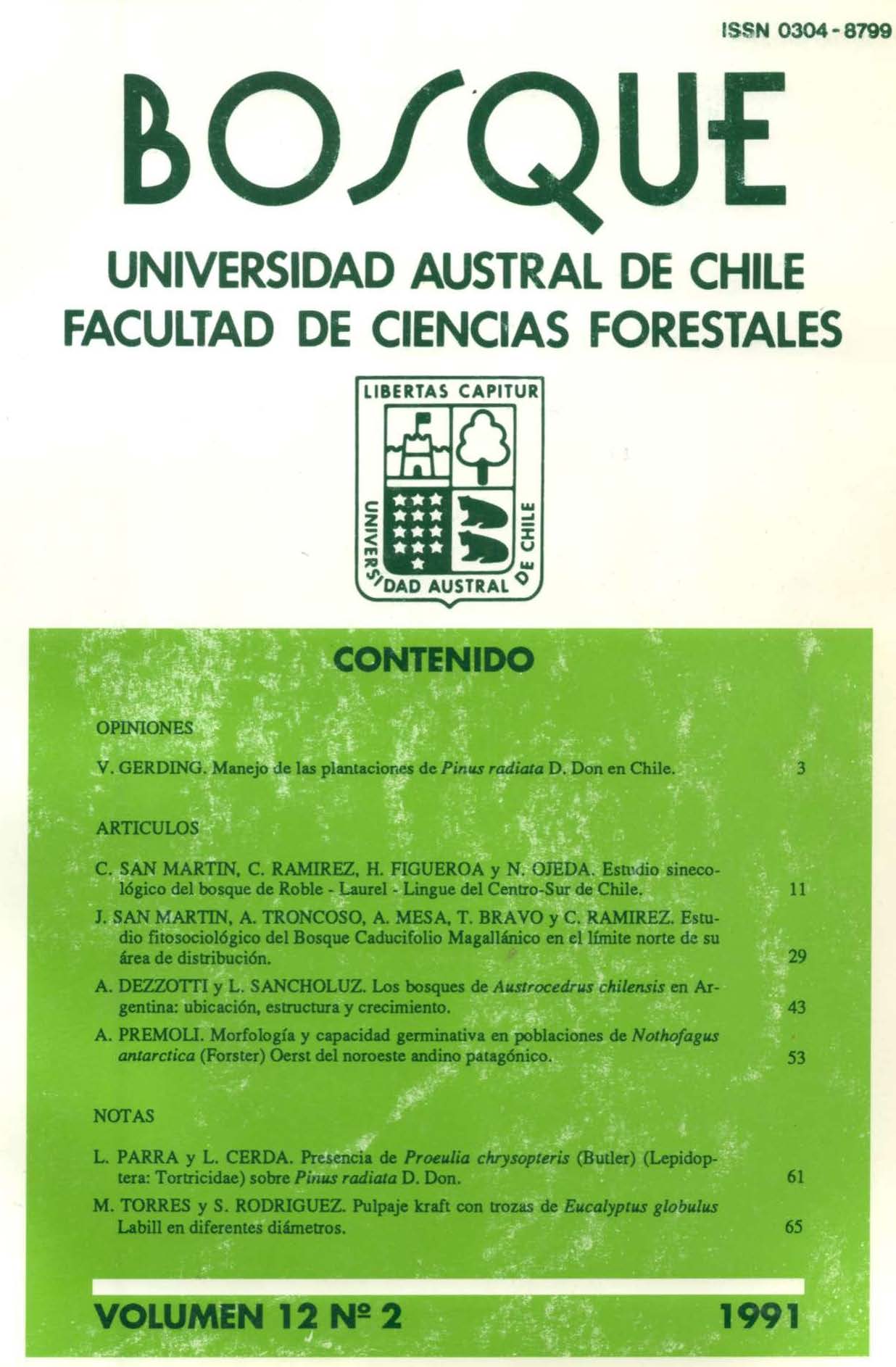Synecological study of the roble-laurel-lingue forest in south-central Chile
Main Article Content
Abstract
The mixed partially deciduous roble-laurel-lingue forest (Nothofago-Perseetum linguae) covered the Intermediate Depression in south-central Chile between the cities of Victoria and Puerto Montt. This primitive distribution area was strongly reduced to obtain agriculture and pasture lands. In order to promote the preservation of these endangered plant associations, a floristic and vegetational description was made on the basis of 52 vegetation samples, taken with the Braun-Blanquet phytosociological method in stands of the provinces of Cautín, Valdivia, Osorno and Llanquihue.
The flora have 158 species, 80% of them are native and the remaining 20% foreign. The most important trees are: Nothofagus obliqua, Luma apiculata, Persea lingue and Laurelia sempervirens. Among the lianen Chusquea quila and Lapageria rosea, stand out the former because its his high cover and the latter because its frequency. Rubus constrictus and Agrostis capillaris are important species belonging to the foreign elements introduced in these forest stands. Phanerophytes and hemicryptophytes dominate in the biological spectrum. The presence of therophytes with scarce cover, but with many species indicates xeric conditions. The forest is polystratified with a deciduous superior tree layer and a evergreen inferior tree layer. Furthermore, scrub, herb and moss layers are found. Eleven lianen species interconect these layers.
The ordering obtained with the principal components analysis, indicates the influence of many environmental factors on the microdistribution of the plant species. The most important are temperature and humidity. The phytosociological ordering separated the few primitive stands from the more intervened ones. Also those with ecotonal characters of the coihue-ulmo forest (Nothofago-Eucryphietum cordifoliae) of the "ñadi" soils from those of the temo-pitra forest (Blepharocalyo-Myrceugenietum exsuccae) of the "hualves". The floristic analysis and the structure of the stands indicates that the majority of them are secondary. However, abundant regeneration of the tree species was found. Finally, a possible secondary anthropogenic degradation is proposed and the conservation of these forest associations is recommended.

